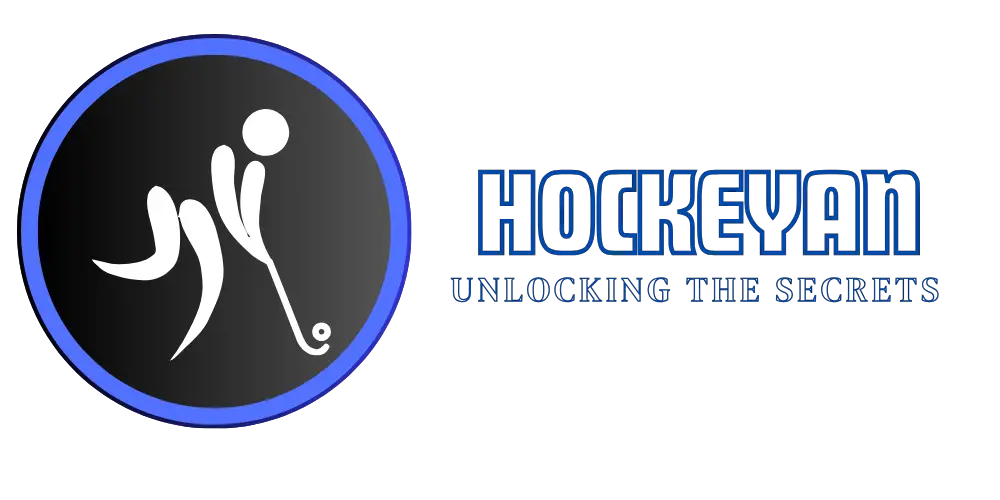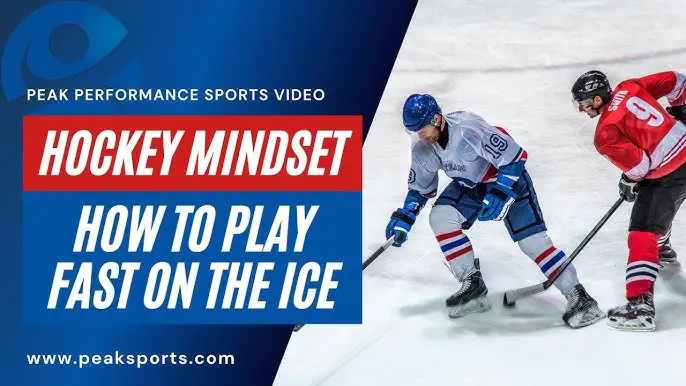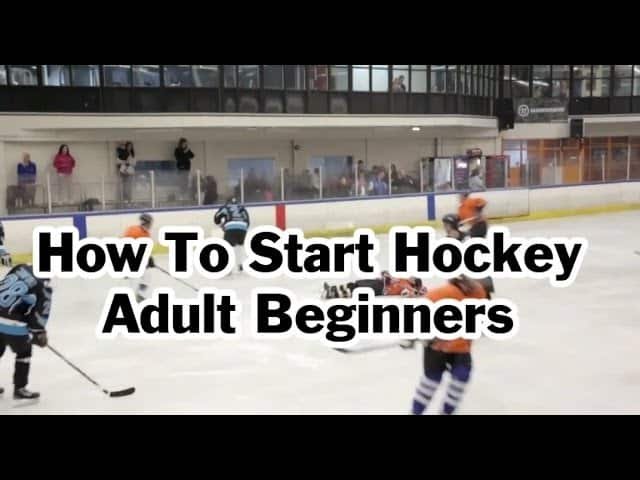Ice Hockey Training Tips! For effective ice hockey training, focus on skating skills and stickhandling. Incorporate strength and conditioning exercises for overall performance.
Ice hockey demands a blend of physical fitness, agility, and skill. Mastering skating techniques is crucial, as they form the foundation of the game. Players must work on their speed, balance, and maneuverability on the ice. Stickhandling drills help improve puck control and coordination, allowing players to navigate through opponents effectively.
Strength and conditioning exercises enhance overall stamina and power, which is vital for enduring the game’s fast-paced nature. Consistent practice and targeted training drills can significantly improve performance and lead to success on the ice.

Credit: next-level-athletics.com
Essential Gear
Ice hockey is an exciting sport that requires skill and the right gear. Having the essential gear is crucial for both performance and safety. This section covers the key equipment every player needs.
Skates And Sticks
Having the right skates and sticks is vital for ice hockey. The skates should fit well and provide good ankle support. Proper fitting skates help you move quickly on the ice. Consider the blade quality for better control and speed.
Choosing the right stick is equally important. Sticks come in various materials like wood, fiberglass, and carbon fiber. Each material offers different benefits. The stick length should match your height for better handling and shooting accuracy.
| Material | Benefits |
|---|---|
| Wood | Durable, affordable |
| Fiberglass | Lightweight, flexible |
| Carbon Fiber | Strong, lightweight |
Protective Equipment
Wearing the right protective equipment is essential in ice hockey. This includes helmets, gloves, and pads. A helmet protects your head from injuries. Make sure it fits snugly and has a face cage.
Gloves protect your hands and wrists. They should be comfortable and offer good grip. Pads protect your shoulders, elbows, and knees. They absorb impacts and prevent injuries during falls or collisions.
- Helmet with face cage
- Gloves with good grip
- Shoulder pads
- Elbow pads
- Knee pads
Don’t forget the mouthguard. It protects your teeth and mouth from impacts. Shin guards are also important to protect your legs from pucks and sticks.
Warm-up Drills
Warming up before ice hockey is important. It prepares your body for action. These warm-up drills help prevent injuries and improve performance. Focus on dynamic stretching and plyometric exercises.
Dynamic Stretching
Dynamic stretching involves moving parts of your body. It helps increase blood flow and flexibility. Perform these stretches before stepping on the ice:
- Leg Swings: Swing one leg forward and backward. Do this 10 times for each leg.
- Arm Circles: Make big circles with your arms. Do 20 circles in each direction.
- Hip Rotations: Rotate your hips in a circular motion. Do 10 rotations each way.
Plyometric Exercises
Plyometric exercises help build explosive power. They involve quick, powerful movements. These exercises are great for ice hockey players:
- Jump Squats: Squat down and then jump up quickly. Do 15 reps.
- Lateral Jumps: Jump side to side over a line. Perform 20 jumps.
- Box Jumps: Jump onto a sturdy box or bench. Do 10 jumps.
Use these warm-up drills before every practice or game. They prepare your body for the intense action of ice hockey.
Skating Skills
Mastering skating skills is crucial for any ice hockey player. Good skating gives you speed, agility, and balance on the ice. It allows you to outmaneuver opponents and make quick, sharp turns. Here are some essential tips to improve your skating skills.
Forward And Backward Skating
Both forward and backward skating are fundamental in ice hockey. Practice these drills to improve:
- Stride Length: Push off with one leg, then glide on the other.
- Knee Bend: Bend your knees to lower your center of gravity.
- Arm Movement: Swing your arms naturally to maintain balance.
Edge Control
Good edge control helps you make sharp turns and quick stops. Focus on these exercises:
- Inside Edges: Glide on the inside edge of the skate.
- Outside Edges: Practice balancing on the outside edge.
- C-Cuts: Use C-shaped pushes to move forward and backward.
| Drill | Description |
|---|---|
| Figure Eights | Skate in a figure-eight pattern to practice edge control. |
| Crossovers | Cross one foot over the other to improve agility. |
Use these tips to enhance your skating skills. Practice regularly and track your progress.
Stickhandling Techniques
Stickhandling is a crucial skill in ice hockey. Mastering stickhandling can improve your game. It helps you keep control of the puck and make quick moves. Below are some tips to enhance your stickhandling skills.
Basic Puck Control
To start with, focus on basic puck control. This involves simple movements. Begin by practicing in a stationary position. Use both sides of the blade to move the puck back and forth. This helps in getting a feel for the puck.
Next, try moving while controlling the puck. Keep your head up to see the ice. Use your peripheral vision to track the puck. Here are some drills to practice:
- Figure 8s: Move the puck in a figure 8 pattern around cones.
- Toe Drags: Pull the puck towards you with the toe of your stick.
- Side-to-Side: Move the puck side-to-side while skating.
Advanced Moves
After mastering basic control, proceed to advanced moves. These include dekes and fakes. Practice these to outsmart opponents. One advanced move is the “Datsyukian deke”. This move involves quick hands and precise timing.
Another advanced move is the “Spin-O-Rama”. This involves spinning around with the puck to evade defenders. Here are some drills for advanced stickhandling:
- Obstacle Course: Set up an obstacle course with cones and stickhandle through it.
- One-Handed Drills: Practice controlling the puck with one hand on the stick.
- Quick Hands: Use a stickhandling ball to improve hand speed.
Stickhandling is an essential skill in ice hockey. Regular practice can help you improve. Use these tips to become a better player on the ice.
Shooting Accuracy
Achieving high shooting accuracy in ice hockey is crucial. It can make the difference between winning and losing a game. Mastering your shooting accuracy requires practice, focus, and dedication. Here, we will explore effective tips for improving your shooting accuracy. We will focus on two key types of shots: wrist shots and slap shots. Additionally, we will delve into target practice techniques to sharpen your skills.
Wrist And Slap Shots
Wrist shots and slap shots are essential in your shooting arsenal. Each type of shot has its unique mechanics and advantages. Let’s break down the techniques and benefits of both.
Wrist Shots
Wrist shots are known for their accuracy and quick release. To perform a wrist shot:
- Place your hands about shoulder-width apart on the stick.
- Pull the puck back slightly behind your body.
- Transfer your weight from your back foot to your front foot.
- Snap your wrists while following through towards the target.
The key to a successful wrist shot is the snap of your wrists. This motion creates a fast and accurate shot. Practice this move to improve your accuracy.
Slap Shots
Slap shots are powerful and can intimidate goalies. To perform a slap shot:
- Place your hands wider apart on the stick.
- Pull the puck back, winding up your stick.
- Shift your weight from your back foot to your front foot.
- Strike the ice just behind the puck with a full follow-through.
Slap shots require a strong follow-through. This helps generate power and accuracy. Make sure to practice both types of shots regularly.
Target Practice
Target practice is essential for improving shooting accuracy. Setting up specific targets helps focus your aim and improves precision.
Using Targets
Create a target practice routine by:
- Placing targets in the corners of the net.
- Setting targets at different heights and angles.
- Using pucks or small objects as targets.
Aim for these targets during practice. This will help you develop muscle memory for accurate shooting.
Repetition and Consistency
Repetition is key to improving your shooting accuracy. Consistently practice hitting targets to build your skills. Aim for:
- 100 wrist shots per session.
- 100 slap shots per session.
Track your progress in a training log. Record your hits and misses. This will help you identify areas for improvement.
Training Aids
Use training aids to enhance your practice sessions. Consider:
- Shooting pads for smooth puck movement.
- Target nets with built-in targets.
- Puck rebounders for rapid-fire practice.
These tools can make your practice more effective and engaging.
Remember, improving shooting accuracy takes time and dedication. Keep practicing and stay focused. Your hard work will pay off on the ice.

Credit: www.usahockey.com
Passing Precision
Passing precision is key in ice hockey. A well-timed pass can change the game’s outcome. Developing precise passing skills requires practice and technique. Below are some tips on mastering short and long passes and one-touch passing.
Short And Long Passes
Short passes are crucial for close-quarters play. They maintain team control and create scoring chances. Practice short passes using quick wrist movements. Keep your stick blade flat and eyes on the puck.
Long passes cover more ice and open up play. They need more power and accuracy. Focus on your stance and follow through. Use your entire body to generate power. Practice hitting targets to improve accuracy.
| Short Passes | Long Passes |
|---|---|
| Quick wrist movements | Full body movement |
| Close-quarters play | Cover more ice |
| Flat stick blade | Accurate targeting |
One-touch Passing
One-touch passing speeds up play and catches opponents off guard. It involves redirecting the puck without stopping it. Focus on your hand-eye coordination. Keep your stick ready and eyes up.
Practice with a partner or against a wall. Use both forehand and backhand techniques. The goal is to pass the puck quickly and accurately. This skill enhances team coordination and offensive plays.
- Keep your stick on the ice
- Maintain eye contact with teammates
- Practice redirecting the puck smoothly
Defensive Strategies
Defensive strategies in ice hockey are crucial for winning games. They help teams stop goals and control the game. Good defense makes the offense’s job easier. Let’s dive into some key defensive tips.
Positioning And Angling
Positioning is about being in the right place. Stay between the puck and the net. This keeps the puck away from your goal. Always be aware of your surroundings.
Angling helps you steer the puck carrier. Use your body to guide them to the boards. This limits their options and makes it easier to take the puck away.
Shot Blocking
Shot blocking is a brave skill. It stops the puck before it reaches the goal. Use your legs and body to cover the shooting lane. This makes it hard for the shooter to score.
Here are some tips for effective shot blocking:
- Keep your stick on the ice.
- Stay low to the ice.
- Turn your body to the side.
These tips help you block shots safely and effectively.
Off-ice Conditioning
Off-ice conditioning is crucial for ice hockey players. It helps improve strength, endurance, and agility. Training off the ice ensures players stay fit and ready for the game.
Strength Training
Strength training builds powerful muscles. Strong muscles help players move fast and hit hard. Here are some key exercises:
- Squats: Strengthens legs and improves balance.
- Deadlifts: Builds lower back and leg muscles.
- Bench Press: Enhances upper body strength.
Workouts should include 3 sets of 10-12 reps. Rest for 1-2 minutes between sets.
Cardio Workouts
Cardio workouts boost endurance and heart health. Strong endurance helps players last longer on the ice. Here are some effective cardio exercises:
- Running: Improves overall stamina.
- Jump Rope: Enhances coordination and agility.
- Cycling: Builds leg strength and endurance.
Aim for 30-45 minutes of cardio, 3-4 times a week.
Here is a simple cardio schedule:
| Day | Exercise | Duration |
|---|---|---|
| Monday | Running | 30 minutes |
| Wednesday | Jump Rope | 20 minutes |
| Friday | Cycling | 45 minutes |
Follow these tips to stay in top shape for ice hockey.

Credit: m.youtube.com
Frequently Asked Questions
What Are Essential Ice Hockey Training Tips?
Focus on skating skills, stickhandling, and shooting techniques. Include off-ice conditioning and strength training. Consistent practice is key.
How Can I Improve My Skating Speed?
Work on your stride efficiency and lower body strength. Practice sprints and agility drills regularly to see improvement.
What Off-ice Training Should I Do For Hockey?
Incorporate strength training, cardio exercises, and flexibility routines. Plyometrics and core workouts are also beneficial for overall performance.
How Often Should I Practice Stickhandling?
Practice stickhandling daily for at least 15 minutes. Use various drills to improve hand-eye coordination and control.
Conclusion
Mastering ice hockey requires dedication and smart training. Focus on speed, agility, and strength to improve your game. Practice regularly and maintain a balanced diet for peak performance. Use these tips to enhance your skills and enjoy the sport even more.
Stay committed, and you’ll see continuous progress on the ice.




